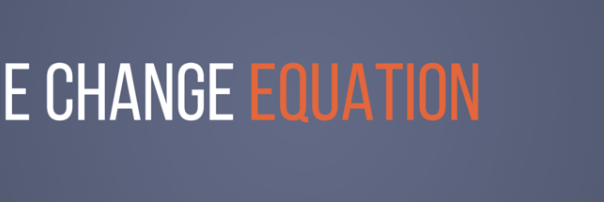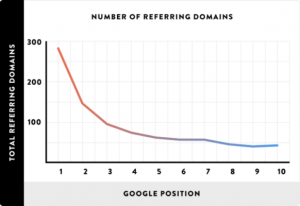“If you want to go fast, go alone. If you want to go far, go together.”
– African Proverb
Today, roughly 70% of businesses change efforts aren’t successful. This means that 70% of the well intentioned efforts to transform businesses, improve customer experience and redesign operations fail.
Luckily, we know a lot about what the 30% do that don’t fail! It comes down to resisting the temptation to “go it alone” and instead build, manage, and sustaintogether.
To avoid failure, it’s helpful to ask oneself the following question: How can I assure my change effort are in the 30% of change efforts that go farther and are more sustainable?
To answer this question, let’s discuss the formula that smart leaders use when leading change: The Change Equation.

The Change Equation: Q x B = S
The Change Equation involves two important variables to make change work:
- Quality of the solution (Q)
- Buy-in from those who will implement it (B)
Together, these variables can predict the Success (S) of the change effort.
In fact, you can use a scale of 1-10 to represent your best educated guess on where the level of Quality (Q) and the level of Buy-in (B) is to gain insight into the likelihood of the change actually achieving Success (S).

The Ideal Change Equation
Quality x Buy-in = Success 10 x 10 =
100
The Ideal Change Equation shows how to maximize the likelihood of success for a desired change effort, with 10 representing the highest Quality (Q) and highestBuy-in (B) possible. This produces a Success (S) score of 100.
Although rarely if ever attainable, this represents the perfect level of change success for any project.

Now, let’s show a few realistic change situations. Consider a situation with a brilliant solution and Quality (High Q) and yet low Buy-in (Low B). Perhaps it is an amazing new product design or software application.
However, few others in the company were involved (like sales or marketing or engineering) in its creation and don’t believe in it. This happens to tech start-ups, innovation groups, or business transformations all too often.
As the Change Equation Scenario below shows, even if the quality of the solution is fantastic, if people don’t agree with it and support it, it will have a very low chance of succeeding.
Change Equation Scenario #1
Quality
x Buy-in = Success 9 x 2 =
18

On the other hand, what about a change idea that everyone loves, but the quality of the idea is very low? There are lots of marginal or even bad ideas that people can rally around, yet they offer little to no sustainable change success.
For example, JC Penney made the decision several years ago to use regular prices that didn’t change, foregoing its traditional hi-lo pricing model with promotions and discounts. People in and out of JC Penney were excited about the change, but it proved to be a terrible idea. The board and executives rallied around the new business model change and it lost them over 20% of their market share. The Change Equation for JC Penney is depicted in Scenario #2 below.
Change Equation Scenario #2
Quality
x Buy-in = Success 2 x 8 =
16
As the above Change Equation Scenario #2 shows, even a solution with high Buy-in and low Quality will result in a similar rate of Success to a solution that has high Quality and low Buy-in. The point is to focus on both variables because they both matter–a lot!
Yet, in the end, smart leaders typically don’t come up with poor solutions very often. Organizations hire intelligent people who create, discover, and assemble really good ideas–change solutions that are usually high in Quality.
Where organizations tend to fall short is in the Buy-in side of the equation. Leaders tend not to spend as much dedicated time being visible and active in communicating and involving those whose buy-in is critical to the development and implementation of the solution. Thus, too many brilliant ideas can suffer a painful death.

To avoid these brilliant fails, smart leaders follow Change Equation Scenario #3. They are willing to spend a little less time on the “Q” side and a little more time on the “B” side.
Change Equation Scenario #3
Quality
x Buy-in = Success 6 x 6 =
36
Notice that with medium “Q” and medium the “B,” the chance of Successdoubles from the success rate of Scenario #1 and Scenario #2. What would be the impact in your organization if you could increase the likelihood of success for a change effort by almost 100%?
Savvy leaders are willing to compromise an A+ solution, in favor of a C+ one inQuality if it means higher and faster Buy-in and a greater overall chance of sustainable Success.

Now, I’m not talking about cutting corners on products or doing shoddy work. What I am talking about is considering how many features or additions or enhancements or customization’s are really needed and balancing that with an appropriate level of buy-in to achieve change success.
With the rate and frequency of change increasing, leaders need to implement, learn, and sustain lasting change. We need to move together to ensure greater chances of success.
True Success: Working Together
It takes true leadership to avoid the temptation of “going it alone” with one’s own brilliant idea and instead choosing to create the Buy-in to go farther together down a new path.
Focusing enough attention on both the Quality and the Buy-in can drive toward greater Success. Working together and securing more Buy-in will help us do more and go farther.
This will help us gain entrance into the desired 30% of change successes and avoid the all too common 70% of change failures.
THE SUCCESS CALCULATOR
Want to discover how successful your project will be, and how sustainable the change will be?
Click here to try our complimentary Change Success Calculator!
Business & Finance Articles on Business 2 Community(50)




